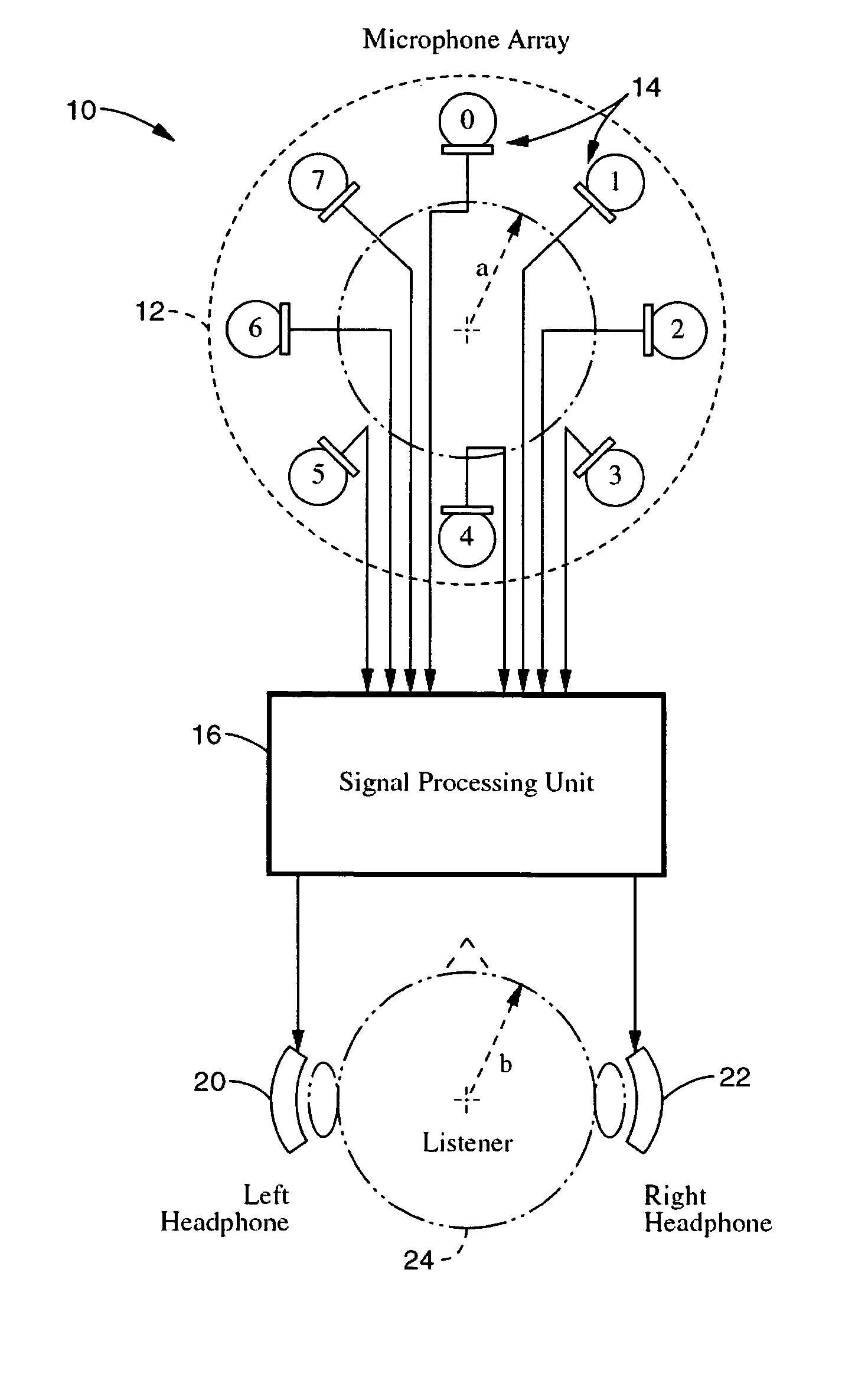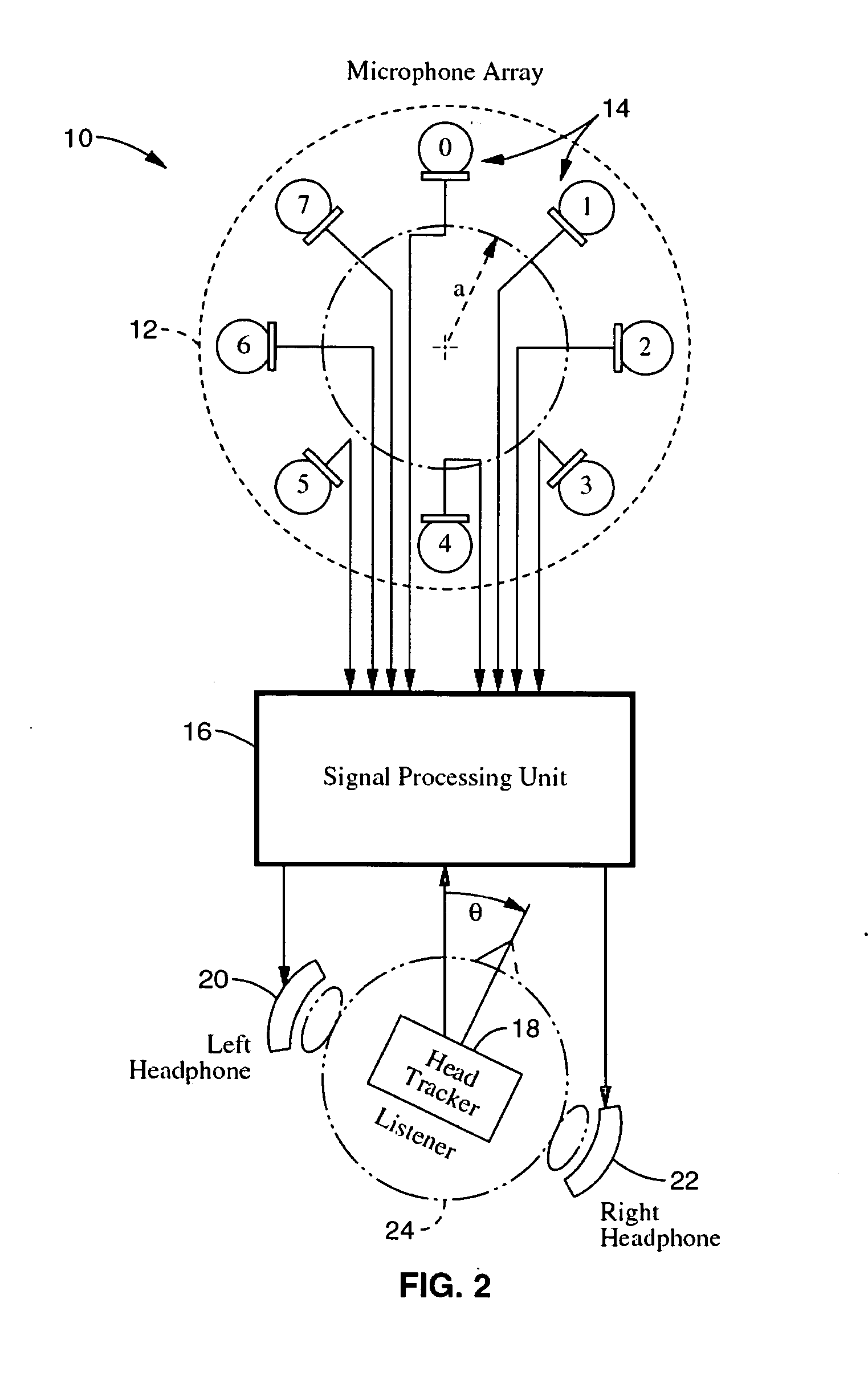Dynamic binaural sound capture and reproduction in focused or frontal applications
a binaural sound and dynamic technology, applied in the field of spatial sound capture and reproduction, can solve the problem of small number of microphones required, and achieve the effect of little or no loss in quality
- Summary
- Abstract
- Description
- Claims
- Application Information
AI Technical Summary
Benefits of technology
Problems solved by technology
Method used
Image
Examples
Embodiment Construction
[0055] Referring more specifically to the drawings, for illustrative purposes the present invention is embodied in the apparatus and methods generally shown in FIG. 1 through FIG. 12. It will be seen therefrom, as well as the description herein, that the preferred embodiment of the invention (1) uses more than two microphones for sound capture (although some useful effects can be achieved with only two microphones as will be discussed later); (2) uses a head-tracking device to measure the orientation of the listener's head; and (3) uses psychoacoustically-based signal processing techniques to selectively combine the outputs of the microphones.
Motion-Tracked Binaural (MTB)
[0056] Referring first to FIG. 1 and FIG. 2, an embodiment of a binaural dynamic sound capture and reproduction system 10 according to the present invention is shown. In the embodiment shown, the system comprises a circular-shaped microphone array 12 having a plurality of microphones 14, a signal processing unit 1...
PUM
 Login to View More
Login to View More Abstract
Description
Claims
Application Information
 Login to View More
Login to View More - R&D
- Intellectual Property
- Life Sciences
- Materials
- Tech Scout
- Unparalleled Data Quality
- Higher Quality Content
- 60% Fewer Hallucinations
Browse by: Latest US Patents, China's latest patents, Technical Efficacy Thesaurus, Application Domain, Technology Topic, Popular Technical Reports.
© 2025 PatSnap. All rights reserved.Legal|Privacy policy|Modern Slavery Act Transparency Statement|Sitemap|About US| Contact US: help@patsnap.com



